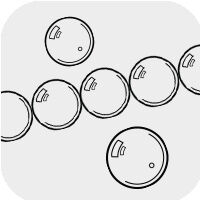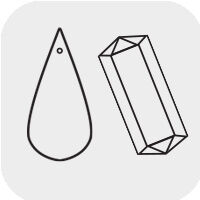Shungite
Meaning and Properties
Shungite History
Shungite has a long history both above and below the earth. It was first named in 1879 by Russian geologist Aleksandr Aleksandrovich Inostrantsev for deposits found near the village of Shunga in the Republic of Karelia, Russia. However, it had been in use as a source of medical treatment among the populace of the region for hundreds of years. When Tsar Peter the Great stopped in Karelia with his army, he was told by residents to bathe in water from an outcropping of shungite. He felt so refreshed by this, he commissioned the first spa in the area to make use of shungite. It is believed that in the battle of Poltava, Peter the Great's army was victorious because they had been drinking water purified by shungite. In 2006 it was confirmed by the Saint Petersburg University that shungite acts as a natural antibacterial filter and it is still used today in Russia as a purifier.
For over three hundred years shungite has been used as a pigment in paint. It is listed under the names "shungite natural black" and "carbon black" today. Shungite deposits are found in areas that are believed to have been biologically rich lagoons over two billion years ago. In 1992 it was discovered that fullerenes, tightly packed balls of carbon atoms, naturally occurs in shungite.
Shungite Metaphysical Properties
Shungite is considered an incredibly powerful stone by believers of metaphysical properties. Due to the ancient age of these gemstones, shungite is believed to have very strong grounding properties and earth energies. It provides a powerful defense against harmful energies created by the electromagnetic frequencies of manmade electronic devices. It helps energize and ground your root chakra, allowing your body to become more receptive to energies in the higher chakras and deflecting away bad luck and other bad energies.
It is also said that water purified by shungite carries some of the same strong earth energies. This may further bring your body into alignment and balance, boost healing, relieve stress and amplify mental energies.
Shungite Geological Properties
Shungite is a mineraloid, a mineral-like substance that doesn't crystalize, that can be made of up to 98% carbon by weight. The variance in carbon content is why shungite is classified as shungite-1 through shungite-5. Shungite-5 is made up of approximately 10 percent carbon by weight. Shungite is further classified based on luster, ranging from bright to semi-bright, semi-dull and dull. Shungite also has a unique surface, almost porous-like, giving it a unique feel and look.
While most shungite is found deep in the earth, it can also be found pushed near the surface in areas of volcanic, or formerly volcanic, activity. The four main fields of shungite are in Russia, though recently pockets have been found in Austria, India, the Democratic Republic of the Congo and Michigan in the United States.
|
|
|
|
|
|
|
|
|
|
|
|
|
|
|
|
|
|
Proper Care of Shungite
Shungite is a very soft stone and can be scratched with some metals, but it contains natural filters throughout making cleaning easy. Clean with warm, soapy water and allow to air dry for several hours.
To learn more about shungite and other gemstones, order your copy of Walter Schumann's revised and expanded edition of Gemstones of the World.
Designing with Shungite
Shungite, like jet, is an ideal addition to unisex, feminine and masculine styles. Black is a fashion staple, and that makes it easy to find a place for shungite in your sophisticated and smart jewelry designs. Black shungite pairs great with shimmering silver metal tones for sleek designs. Shungite also pairs well with gold and gunmetal hues due to having a more matte finish than more lustrous gemstones.
View more resources featuring shungite, including Design Ideas, Videos, Tutorials and more!
Shop for Shungite
**Please note that all metaphysical or healing properties listed are collected from various sources. This information is offered as a service and not meant to treat medical conditions. Fire Mountain Gems and Beads® does not guarantee the validity of any of these statements.
How did you like this resource? Your feedback helps us provide resources that matter to you most.
Copyright Permissions
All works of authorship (articles, videos, tutorials and other creative works) are from the Fire Mountain Gems and Beads® Collection, and permission to copy is granted for non-commercial educational purposes only. All other reproduction requires written permission. For more information, please email copyrightpermission@firemtn.com.


